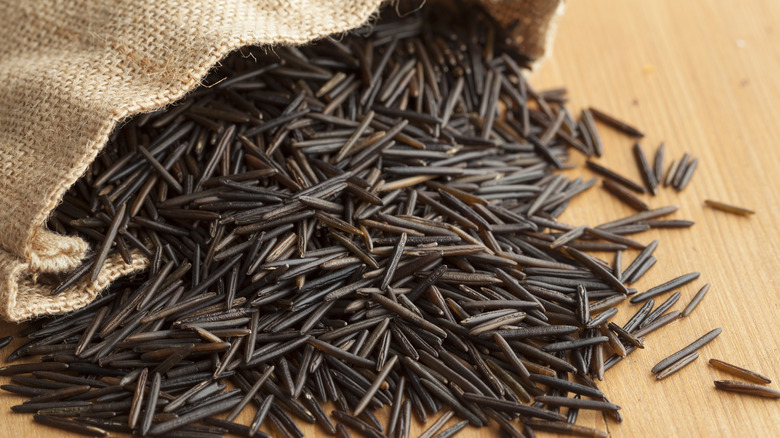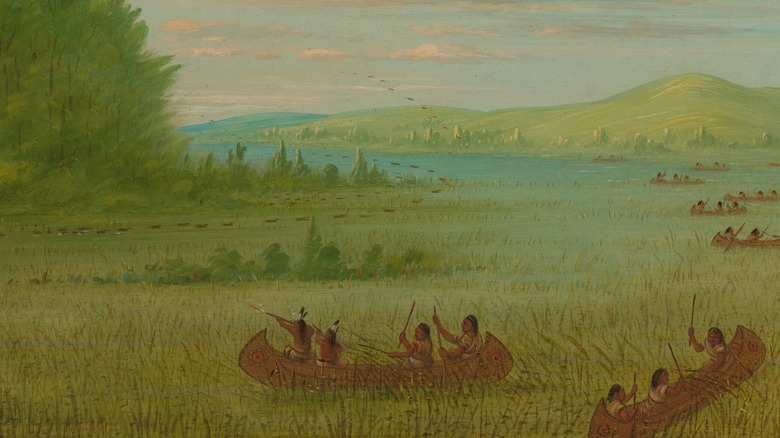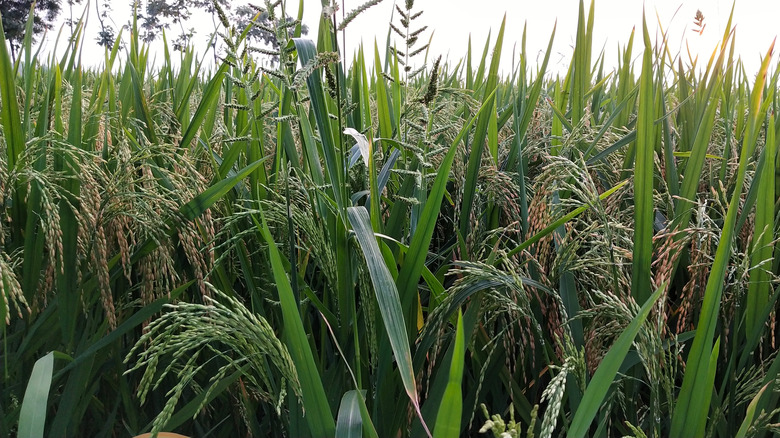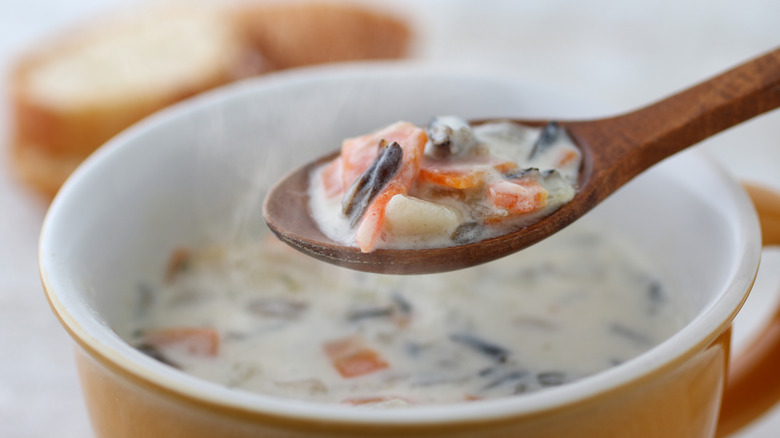Is Wild Rice Actually Considered Rice?
We may receive a commission on purchases made from links.
No, wild rice isn't actually rice. What is it? Grass seed! What is rice? Well, grass seed. But wild rice isn't rice? No — and it's usually not wild. ... What?
Let's start at the top: A cereal is any grass cultivated for its edible grain comprised of an endosperm, germ, and bran. Rice is the cereal grain of two species of grass, Oryza sativa and Oryza glaberrima. Rice, scientifically, is in the same family (Poaceae) and tribe (Oryzeae) as wild rice, but is in a different genus (Oryza). Rice is native to various parts of Asia and Africa. Depending on the type of rice, it can grow in either wet or dry environments, from dry, hilly regions to coastal wetlands and deep water.
Wild rice is the cereal grain of any of four species of semiaquatic grass in the genus Zizania. It, like brown rice, is a whole grain comprised of an endosperm, germ, and bran. Its native territory is primarily along the border between the U.S. and Canada, though one species grows in Florida and another in Texas. Is it a little pedantic to not consider wild rice to be rice, given their similarities? Maybe. And though it only started domestic cultivation in 1967 (via Associated Press) and little of what's on the market in most stores today is actually wild grown, wild rice has a long indigenous history that is as important today as ever.
Wild and cultivated wild rice
Wild rice has long been a primary staple crop of the Anishinaabe, specifically the Ojibwe tribe of the Great Lakes region. They call it manoomin, or "the food that grows on water," per Saveur. It is hand harvested in pairs, with one person paddling or polling a canoe through wild rice and the other threshing it into the canoe. The green rice is then parched, or roasted, over a wood fire, creating a storable food.
It's a tradition that continues today, and is recognized in the U.S. Department of Agriculture (USDA) regulations around wild rice: to be called hand harvested, it must be done so "from a canoe following traditional methods used by Native Americans." Similar guidelines are outlined for wood (hand) parching.
Wild rice that has been commercially cultivated rather than wild harvested is called "paddy rice." The paddies are drainable and allow for mechanized combine harvesting, something that has been illegal in the truly wild harvesting of wild rice in Minnesota, the world's largest producer of wild rice, since 1939. Though most wild rice on the market today is paddy rice, it is still possible to find traditionally harvested, truly wild rice, both by tribal and non-tribal foragers.
Legal questions involving wild rice
The Ojibwe aren't strangers to fighting for the preservation of their wild rice territory, from the Treaty of Mendota to the building of Enbridge Oil's Line 3. The construction of this pipeline through wild rice beds has led to a unique legal proposition: the rights of wild rice. The White Earth Band of Ojibwe in Minnesota passed a tribal law in 2018 granting enforceable rights to wild rice, including those to "flourish, regenerate, and evolve" (via the Star Tribune). They argue that the diversion of 5 billion gallons of water to build the pipeline would disrupt these rights.
In regards to the farmers themselves, USDA crop insurance does not insure wild rice beds, only cultivated beds. An oil spill or disruption from the line construction would affect and potentially ruin the livelihoods of wild rice foragers.
As for wild rice farmers, whether or not the grain is classified as rice could make a $250,000 difference this year. In the passing of the 2022 agriculture bill, H.R. 2617, the USDA put forth a new program for rice producers that provides up to $250,000 in a one-time payment for rice crops affected by or prevented by drought and other environmental factors. Because the USDA does not classify wild rice as rice, it's unclear whether wild rice producers would be eligible for this protection. Between drought and pollution of waterways, there are any number of environmental dangers that could spell bad news for a semiaquatic crop.
Cooking wild rice
Sean Sherman, The Sioux Chef of Owamni, prepares wild rice cakes with pureed, overcooked wild rice in his cookbook "The Indigenous Kitchen." Forming a dough, he griddles them and serves them with smoked fish, bison, duck, or for dessert slathered in maple berry sauce (via the University of Minnesota Press).
Wild rice can be used in many applications that rice can be, for a fresh twist. Old favorites are, of course, creamy chicken and wild rice soup or wild rice casserole (though if you're from Minnesota, it's a hotdish). It's delicious stuffed into a pork loin with cherries and almonds or as a riff on arroz con pollo.
Whether you get your wild rice off the shelves at your local grocery store or order straight from Ojibwe producers like Native Harvest, it's delicious. Preparing wild rice is, as expected, similar to but different than rice. After rinsing, cover with water. Bring to a boil, and then lower to a simmer. Depending on how and where it was produced, it could take anywhere from 30 minutes to one hour.



